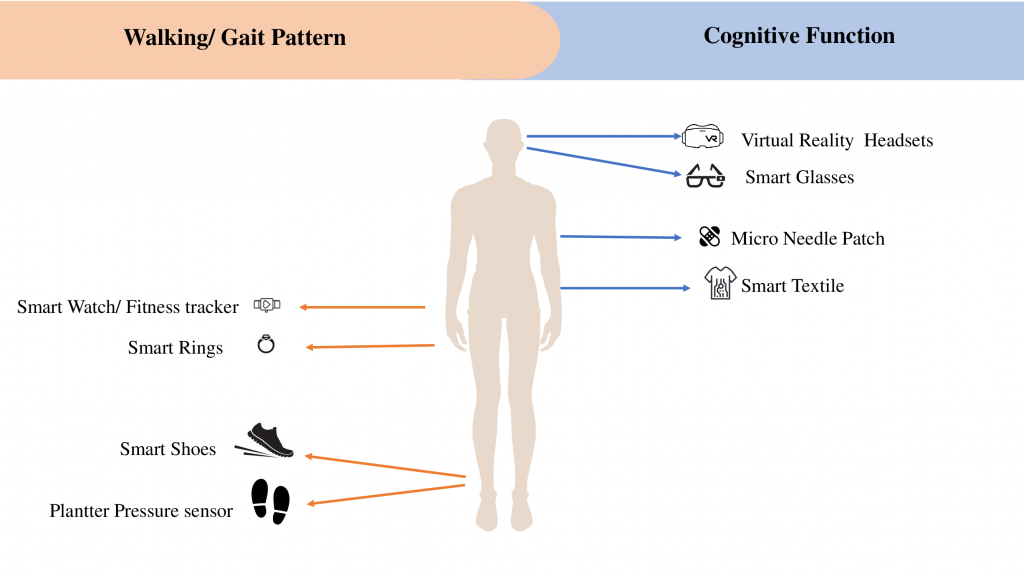3.5.2023: Catherine Suubi Kayonga & Melika Azim Zadegan: Empowering the Elderly: How Social Robots and Wearables Can Improve Quality of Life
Catherine Suubi Kayonga & Melika Azim Zadegan: Empowering the Elderly: How Social Robots and Wearables Can Improve Quality of Life
This post unveils artificial intelligence as a possible ray of hope and a medium that can be harnessed to realise some of the social and healthcare needs of older people, to make their lives better. In this blog, we discuss the benefits of social robots and smart wearables for older people with neurodegenerative diseases.
The Potential of Social Robots in Alleviating Loneliness
It is within human nature to yearn for a sense of belonging and meaningful relationships, irrespective of age and gender. It is amazing how far an evening out with friends can be comforting in hard times. Whereas relationships may come more easily in younger age groups, social relations in old age are sometimes problematic due to limited mobility and the bereavement of partners or companions. Thus, the idea of social robots is to fill that void by providing humanlike companionship.
Whereas many types of robots exist today with different structures and programmed tasks, social robots have been mainly designed to offer companionship and interaction in a human-like manner. Most social robots are humanoid robots, meaning that they have human-like features, like the ability to interact and socialise with older people by engaging in play, conversations and reading newspapers for older people. Pepper and Sophia are some examples of social robots. Pepper has been programmed with the ability to tell jokes, play board games, monitor health, and improve physical exercise in older people. Besides, Sophia has been made to mimic human-like facial expressions like sustaining eye contact, frowning, and laughing due to its life-like rubber skin while conversing with people.

With the existing problems among older people in many parts of the world, social robots could be the remedy. One of the aspects that makes social robots appealing is their ever-friendly demeanour, not taking things personally, and their ability to engage without getting tired. In our opinion, social robots could be even more valuable in caring for older people with memory diseases like dementia due to their ability to repeat things several times if needed, unlike human caretakers, who could get tired at some point. To bring the message home, the movie named “Robot and Frank (2012)”, directed by Jake Schreier, although fictional, gives a depiction of how the bond between humans and social robots could be nurtured.
Challenges and Ethical Considerations of Using Social Robots in Caregiving
Since the care of older people is highly personal, the use of social robots may come off as unacceptable, undesirable, or even a practice that might not be appeasing in different cultural, environmental, or even religious settings. Furthermore, it might also be that the use of such artificial intelligence might have some ethical issues, like the inability to have a real personal touch or the materialisation of older people to the extent of leaving their care to artificial carers. Whereas there could be some truthfulness to these ethical issues, the intention of this blog is to raise awareness of the likely potential of artificial intelligence so that families can have options for the care of their loved ones. Creating a discussion about artificial intelligence, especially social robots, is a step further in the right direction towards talking about issues that are usually side-lined and left in the hands of a few decision-makers.
It is also important to mention that this discussion does not try to rally for the care of social robots over the care provided by human caregivers or exalt the caring practices of social robots over human caretakers. On the contrary, the major point of this piece of writing is to make the abilities present in artificial intelligence known so that, at the end of the day, although very different, these two caregiving entities could be able to complement each other to provide the best services to older people.
Remote Monitoring Devices for Monitoring Physical Activity and Biometric Data for Managing Neurodegenerative Diseases
Whereas social robots could have the ability to tackle the social-emotional challenges of ageing, such as, loneliness, smart devices (see picture below) tackle the physical challenges that arise with older age, such as physical immobility and memory diseases. And for this case, imagine waking up one day and finding that you struggle to move your arm, cannot walk properly or even remember your name. That is the reality for millions of older people around the world living with neurodegenerative diseases like Parkinson’s, Alzheimer’s, multiple sclerosis, and Normal Pressure Hydrocephalus (NPH). These conditions can devastate a person’s quality of life, making everyday activities like getting dressed, cooking a meal, or even walking around the house incredibly challenging.

Are you or someone you know dealing with a neurodegenerative disease? If so, you know just how difficult it can be to manage the symptoms and maintain a good quality of life. Fortunately, there’s a range of wearable technology available that can help. From smartwatches, fitness trackers to virtual reality headsets and brain-computer interfaces, these devices are transforming how we care for patients with these conditions. One of the most exciting areas of wearable technology is monitoring physical activity and biometric data. By using smartwatches or an intelligent ring, healthcare professionals can gain valuable insights into a patient’s health metrics, helping to monitor disease progression and detect changes in their health conditions.
But smart devices are not limited to monitoring physical activity – smart clothing and continuous glucose monitors are also being used to manage symptoms and improve quality of life. Perhaps one of the most innovative uses of wearable tech is virtual reality headsets for cognitive training and rehabilitation. These headsets provide a safe and controlled environment where patients can practice tasks like hand-eye coordination, problem-solving, and memory recall. Brain-computer interfaces are opening a whole new world of possibilities for individuals with neurodegenerative diseases or spinal cord injuries, allowing them to control devices or communicate through brain signals.
However, wearable technology is not just about the devices themselves but also about how they’re used. Remote patient monitoring solutions, for example, are revolutionising patient care by allowing healthcare professionals to monitor patients’ health from a distance. This can be especially useful for individuals with conditions like Normal Pressure Hydrocephalus (NPH), which affects older adults and can cause difficulty walking urinary incontinence, and dementia. With a smart ring that monitors activity levels and gait speed, caregivers can closely monitor their loved one’s health and provide timely medical care if needed.
Tailoring Wearable Tech Solutions to Meet Specific Needs
As with any technology, it’s important to consider patients’ and caregivers’ expectations and unique needs. By working together with healthcare professionals and technology providers, we can ensure that wearable tech solutions are tailored to meet their specific needs and improve their quality of life. If you or a loved one is living with a neurodegenerative disease, know there is hope in the form of wearable technology!
In a nutshell, with the ever-growing technological advancements in almost all facets of life, it is only a matter of time that domains that were predominantly occupied by human beings, like care, will be significantly occupied by artificial intelligence due to its advantages, some of which have been discussed above. We must be ready when these changes occur, as more dialogue about this technology’s ethical use and affordability will also be necessary. Hopefully, through these continuous discussions, we will appreciate and take advantage of technology, bearing in mind that artificial intelligence is here to serve the human race rather than become enslaved by it.
Collaborative Efforts to Improve the Quality of Life for Older People through Technology
One of the most rewarding moments of being a part of the multidisciplinary Neuro-Innovation programme is the opportunity to interact with and learn from researchers from different walks of life and specialisations. This blog post was born out of a discussion over coffee that revealed our mutual passion for technology and its potential to improve the quality of life of older people. Two doctoral researchers from the University of Eastern Finland’s Faculty of Social Sciences and Business School wrote this post together: Catherine Suubi Kayonga, whose research is focused on uncovering the unmet social and healthcare needs of older people in Finland and Melika Azim Zadegan, whose research focuses on remote patient monitoring of Normal Pressure Hydrocephalus patients.
If these points of view in the blog resonate with you, please stay tuned as we will have continuous discussions about the future of other technological advancements that can be used to improve older people’s quality of life.